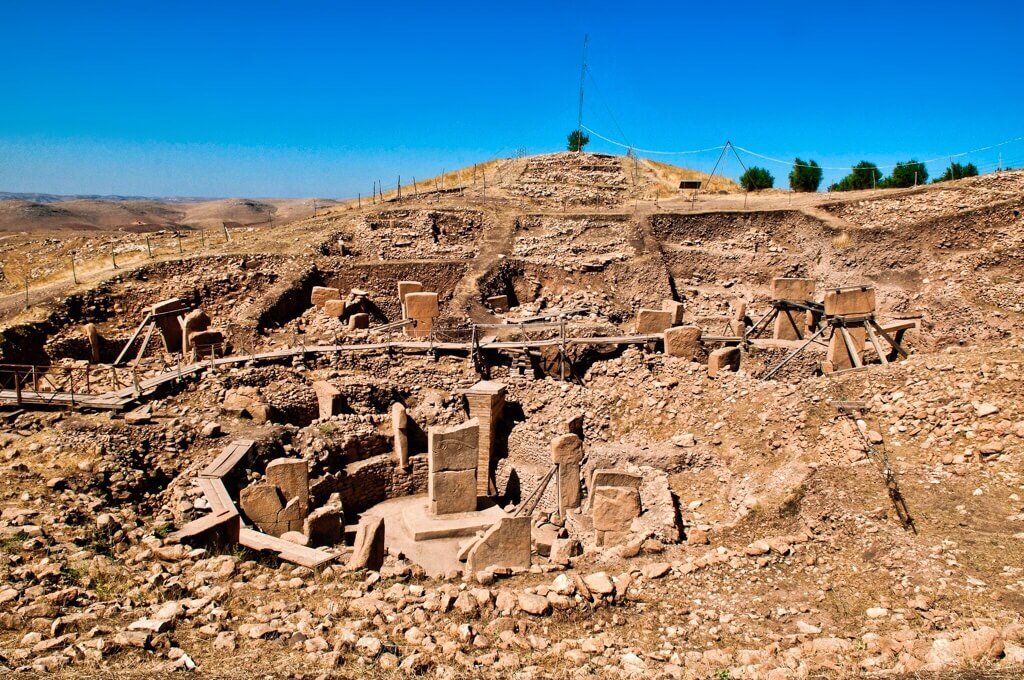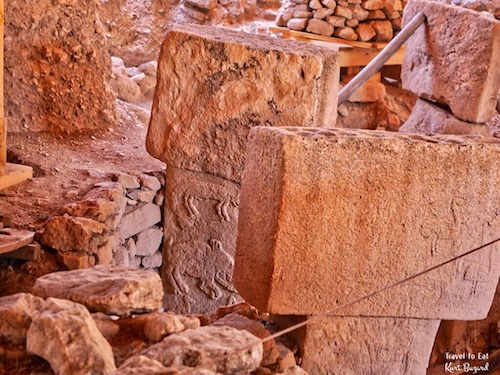
Göbekli Tepe is the oldest megalithic structure on earth, predating Stonehenge by 6600 years and the Pyramids by 7100 years. Göbekli Tepe, or “Potbelly Hill” in Turkish, is possibly the most important archaeological discovery of this century, atop a mountain ridge in the Southeastern Anatolia Region of modern-day Turkey, approximately 12 km (7 mi) northeast of the city of Şanlıurfa. It was discovered in 1995 by archeologist Klaus Schmidt. What makes this site so special is not the age but the implications regarding the onset of the Neolithic period when humans first settled in permanent communities in a fixed location. I have previously written on the ragged edge between the Paleolithic hunter-gatherers and the more sedentary Neolithic settlements. Specific markers such as pottery, domesticated animals and cultivation of grains were discovered, forgotten and rediscovered over millennia before the lessons took root in the Neolithic package. Göbekli Tepe demonstrates another indistinct marker, special use megalithic buildings, possibly temples, built by Paleolithic hunter-gatherers.
Göbekli Tepe, or “Potbelly Hill”
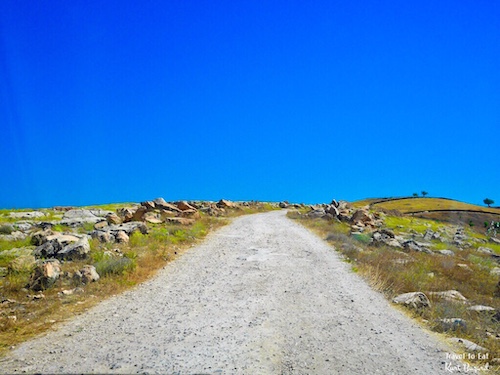

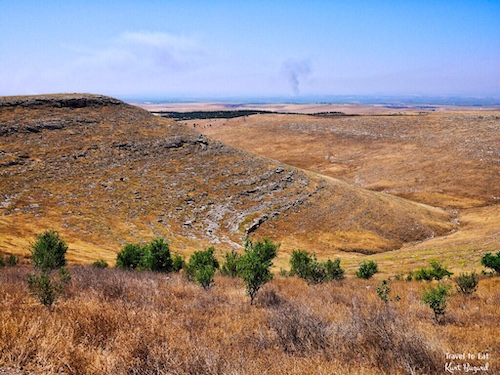
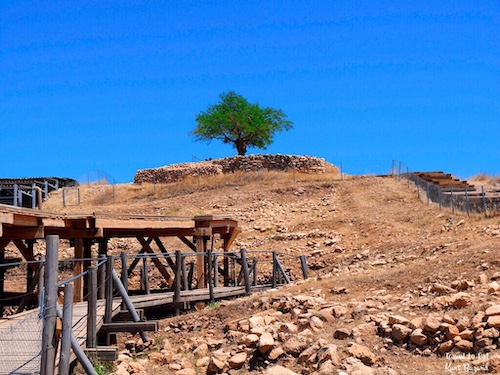
Göbekli Tepe is on a flat and barren plateau, with buried buildings fanning in all directions. In the north, the plateau is connected to a neighbouring mountain range by a narrow promontory. In all other directions, the ridge descends steeply into slopes and steep cliffs. On top of the ridge there is considerable evidence of human impact, in addition to the actual tell. Excavations have taken place at the southern slope of the tell, south and west of a mulberry that marks an Islamic pilgrimage, but archaeological finds come from the entire plateau. The team lead by Klaus Schmidt, who died in 2014, found many remains of Stone Age tools.
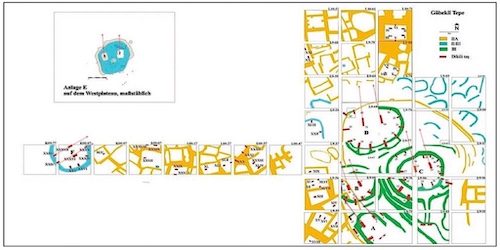
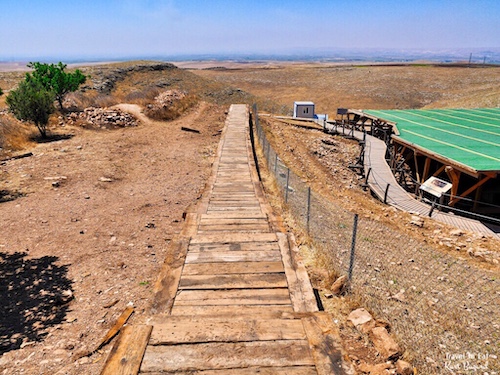
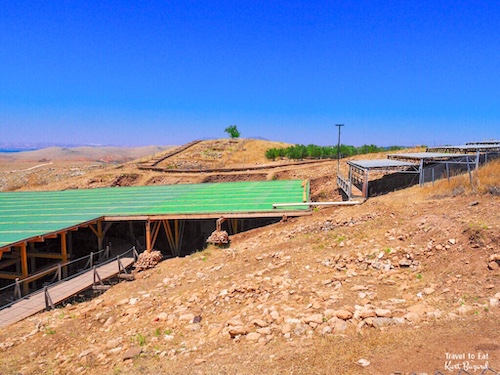
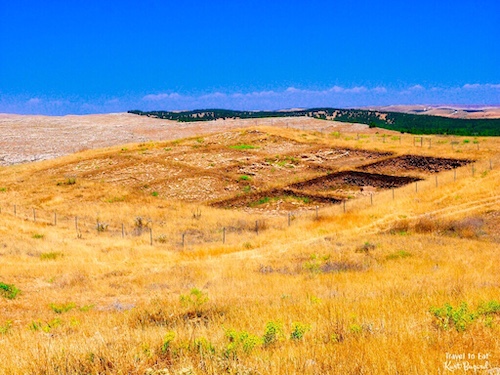
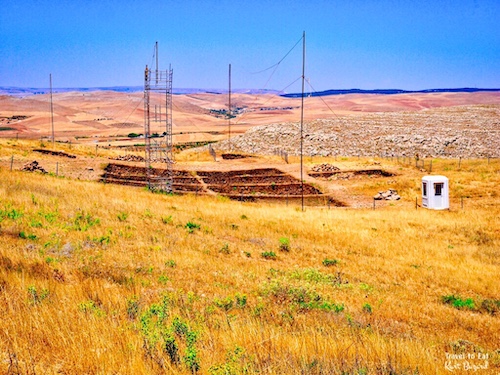
Future plans include construction of a museum and converting the environs into an archaeological park in the hope that this will help preserve the site in the state in which it was discovered. In 2010, Global Heritage Fund (GHF) announced it will undertake a multi-year conservation program to preserve Göbekli Tepe. Partners include the German Archaeological Institute, German Research Foundation, Şanlıurfa Municipal Government, the Turkish Ministry of Tourism and Culture and, formerly, Klaus Schmidt. All statements about the site must be considered preliminary, as less than 5% of the site has been excavated, and Schmidt planned to leave much of it untouched to be explored by future generations (when archaeological techniques will presumably have improved). While the site formally belongs to the earliest Neolithic (PPNA), up to now no traces of domesticated plants or animals have been found. The inhabitants are assumed to have been hunters and gatherers who nevertheless lived in villages for at least part of the year.
Enclosure E
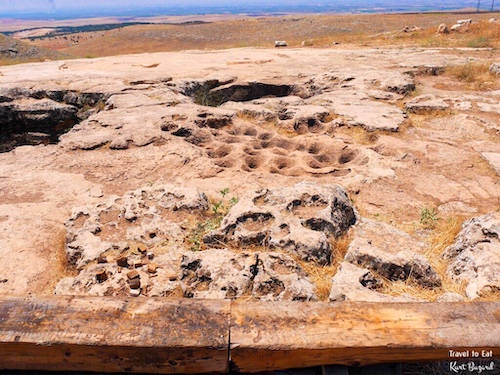
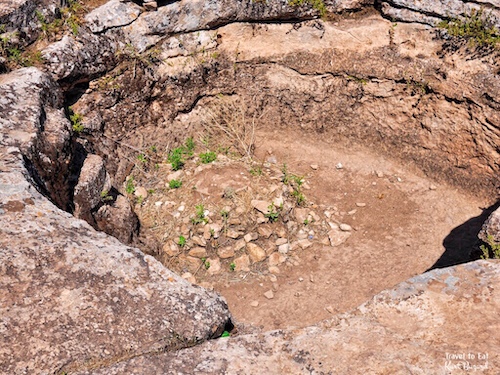
In the first survey in 1995 the oval structure cut into the bedrock and two pits immediately north of it had been recognized. The general layout of the oval with its two pedestals is repeating the excavated enclosures B, C, D and F. Into the oval pecked out holes in the center of the pedestals originally pillars had been set, which had been removed like further pillars placed within the enclosure walls, to be used in other similar structures inside the mound. The structure in bedrock later had been numbered as enclosure E.
Iconography of Göbekli Tepe
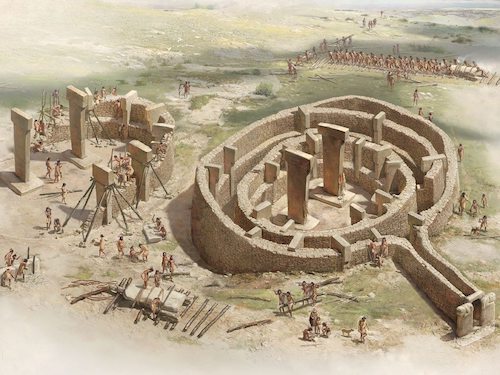
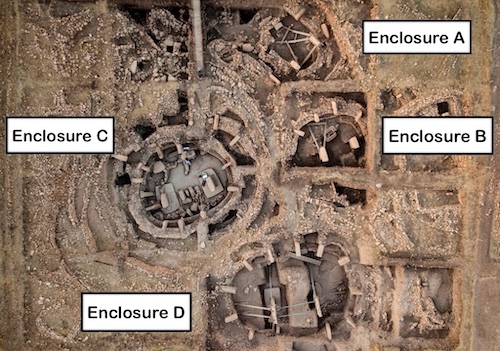
The imposing stratigraphy of Göbekli Tepe attests to many centuries of activity, beginning at least as early as the epipaleolithic period. Structures identified with the succeeding period, Pre-Pottery Neolithic A (PPNA), have been dated to the 10th millennium BCE. Remains of smaller buildings identified as Pre-Pottery Neolithic B (PPNB) and dating from the 9th millennium BCE have also been unearthed. The determining feature of the older archaeological level, Stratum III, is its T-shaped pillars. Up to five meters (16.5 feet) in height and weighing tons, they are arranged in circle-like or rather oval shapes around two particularly large central pillars and integrated into walls encompassing the ensemble while shutting it off from its surroundings, thus creating an interior space. All pillars face the two pillars in the center of the circle. It seems obvious that the duality of the central pillars was of special significance. The fact that depictions of arms can be seen embracing the pillars suggests that the pillars represent anthropomorphous beings. The upper horizontal element of the T-shape might be interpreted as a head, and the long, vertical element as a body. More than 200 pillars in about 20 circles are currently known through geophysical surveys although only four circles have been excavated.
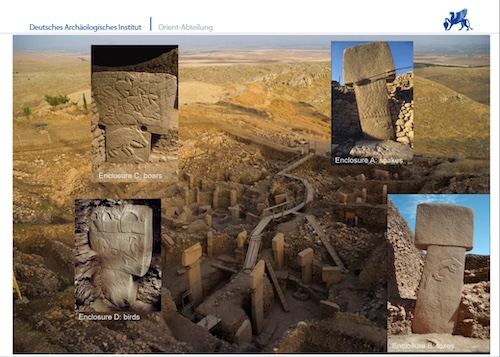
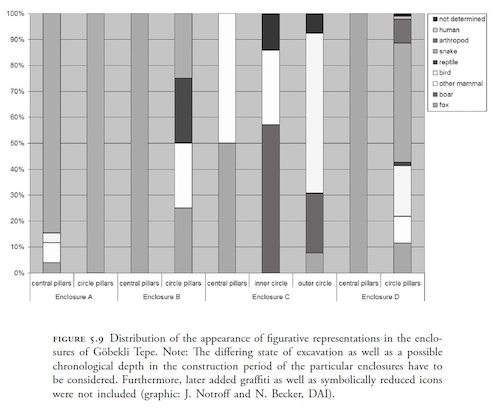
Almost all pillars residing in Göbeklitepe have various animal reliefs on them, depicting the snake, fox, crane, boar and other assorted creatures. The reliefs show us a quite sophisticated sense of art. Besides the various animal sculptures, totem poles and signed tablets were also unearthed. The enclosures of Göbekli Tepe show a variation in the animal species depicted prominently in the iconography of each circle. While in Enclosure A the snake prevails, in Enclosure B foxes are dominant, for example. In Enclosure C boars take over and in Enclosure D birds are playing an important role. Oliver Dietrich suugests these may represent male initiation rites including the hunt of fierce animals and the symbolic decent into an otherworld (especially if the enclosures really were roofed), symbolic death and rebirth as an initiate could have been one purpose of rituals at Göbekli Tepe.
Enclosure A
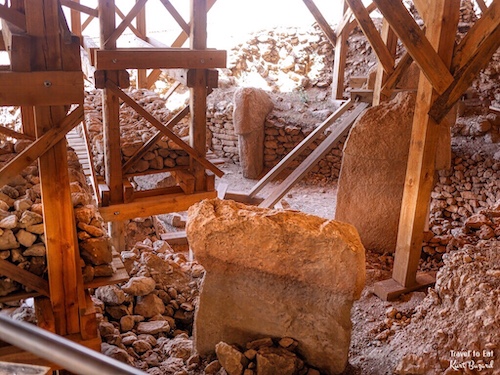

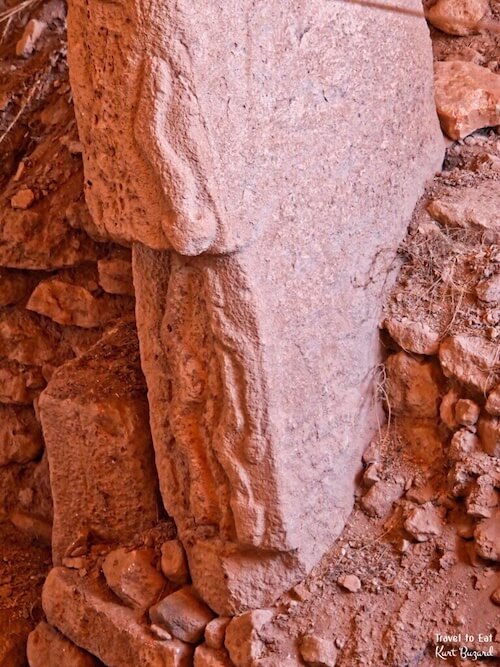


Enclosure A was discovered in 1995 and excavated from 1996 to 1997. There had been no more excavations until today’s visible condition. The main features are the T-shaped megalithic pillars. Sometimes arms and hands are depicted on the pillars, which can be recognized as stylized anthropomorphic beings. There are always two in the centre of an enclosure. Important are the reliefs of the two central pillars PI and P2, depicting a net made of snakes above a ram and a vertical row of a bull, a fox and a crane. Pillars 1 and 2, the central pillars of Enclosure A, were excavated down to the level of the stone bench leaning against the inner walls of the building. Both pillars are richly adorned with reliefs. Particularly striking is a net-like pattern, possibly of snakes, on the south-western side of Pillar 1. The front side of this pillar carries a central groove running vertically from below the head to its base, covering about one third of its width. This groove and the raised bands to either side are decorated with five snakes in bas-relief. Maybe this is a depiction of a stola-like garment which is similarly known from other pillars as well.
Enclosure B
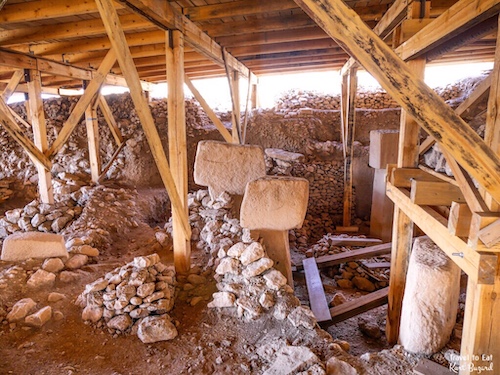
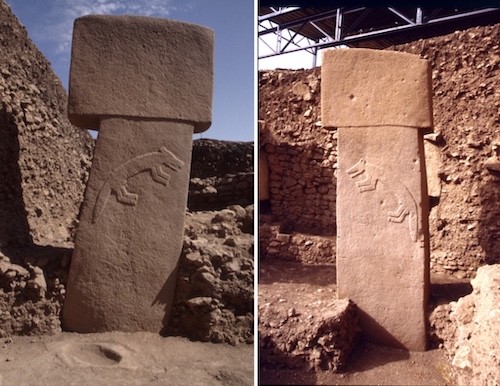
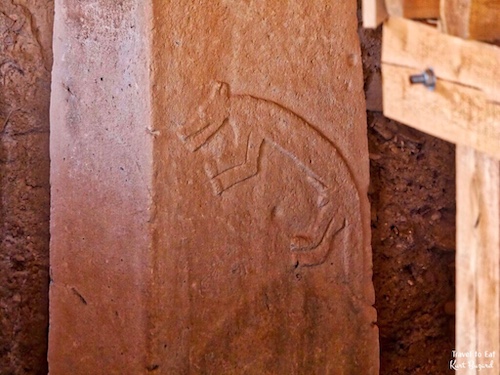
Enclosure B was discovered in 1998 and excavated from 1998 to 2002. The central pillars P9 and P10 have a height of 4m (over 13 ft) above the well preserved concrete like and water proof Terrazzo floor. A stone bowl is placed inside the floor in front of pillar 9. At both pillars there are the reliefs of male foxes. The ground plan of this enclosure is round, with an internal diameter of nearly 10 metres. Two central pillars and a total of eight pillars in the surrounding ring wall have been discovered so far. Most of these pillars are undecorated. Both central pillars of Enclosure B, Pillars 9 and 10, bear a fox depiction – which thus dominate the reliefs of this scarcely decorated building. The fox on the western broad side of Pillar 9 is large, it measures about 110 cm. The fox on Pillar 10 follows this relief in position and measurements. Below it the shallow engravings of a boar and three dogs are visible, probably a later added hunting scene.
Enclosure C
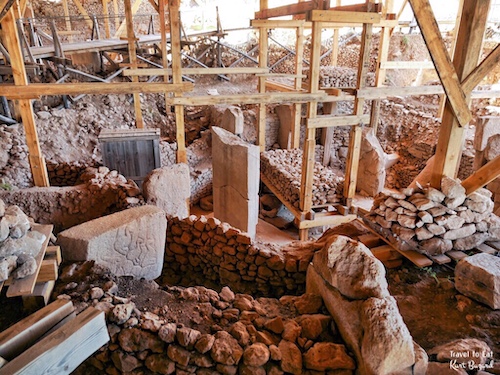

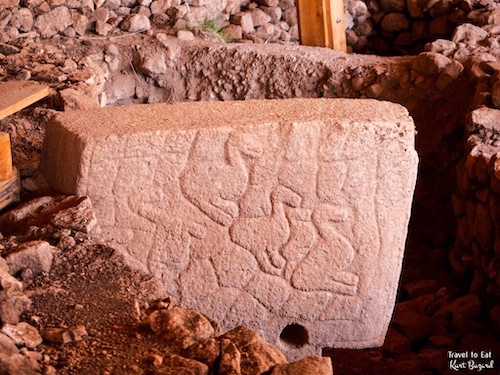

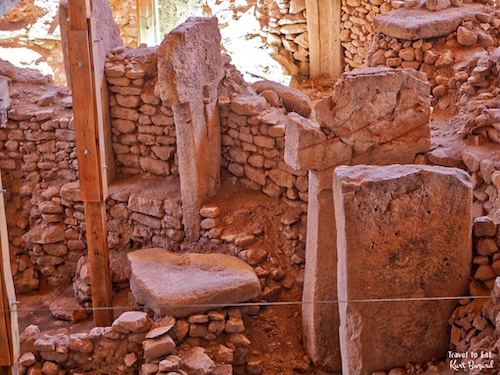
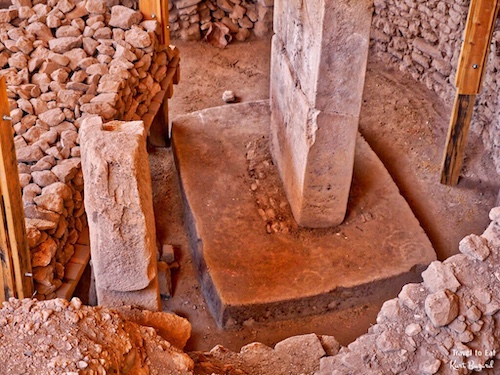
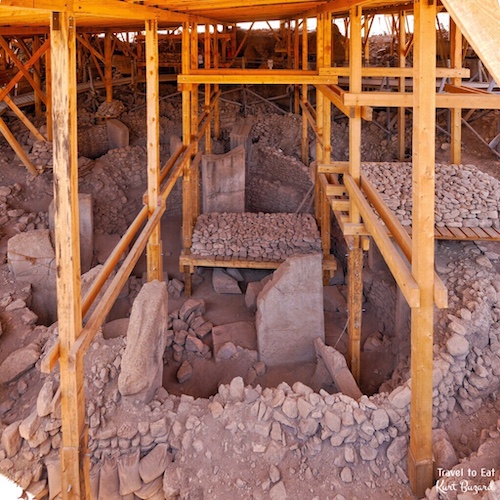
In enclosure C, discovered as well in 1998, there are two concentric circles of pillars. The artificially well smoothed bedrock had been used as floor. The central area had been heavily damaged in antiquity, but fortunately a spectacular high relief of a predator on pillar 27 survived the destruction.
Enclosure D
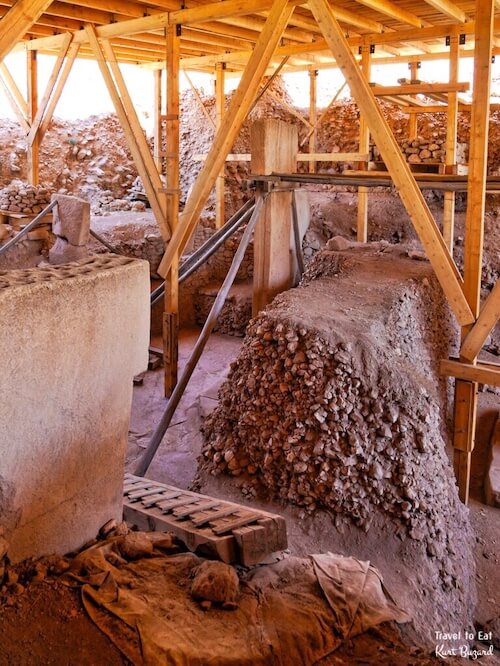
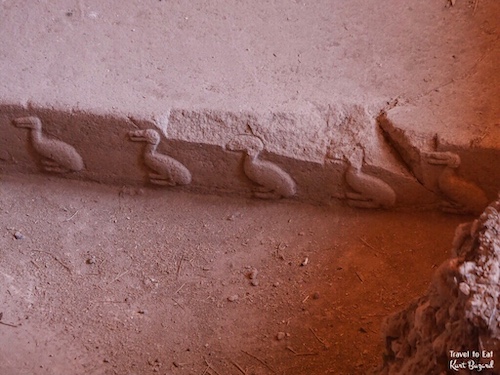
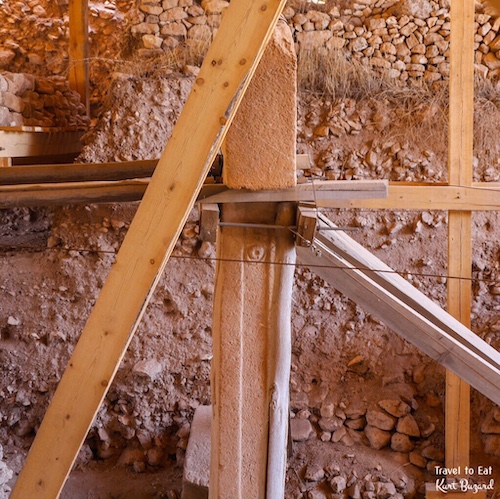
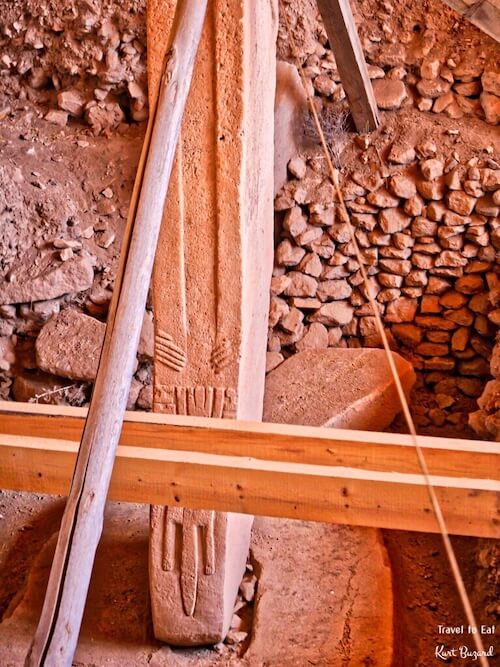
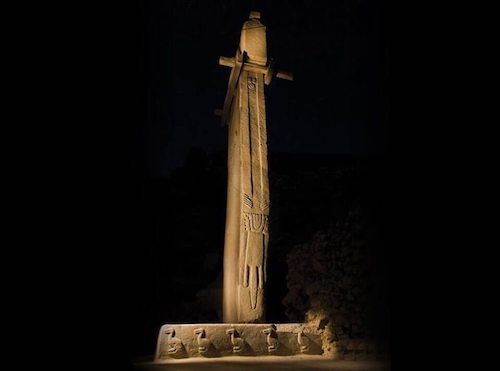

Enclosure D was discovered in 2001. It is preserved very well with numerous reliefs of animals, like foxes and boars, bulls and gazelles, snakes, spiders and scorpions. Remarkable is the depiction of a headless man with erected phallus on pillar 43. The central pillars 1, 8 and 31 have a height of 5.50m (18 ft) above the pedestal made of bedrock. Arms and hands are visible, PI8 holding a fox in its right elbow. Both pillar beings are wearing belts with a loincloth made of animal skin. Few humanoid figures have appeared in the art at Göbekli Tepe. However, some of the T-shaped pillars have human arms carved on their lower half, suggesting that they are intended to represent the bodies of stylized humans (or perhaps gods). Loincloths also appear on the lower half of a few pillars. The horizontal stone member on top is thought to symbolize a human head.
Later Constructions, Layer II
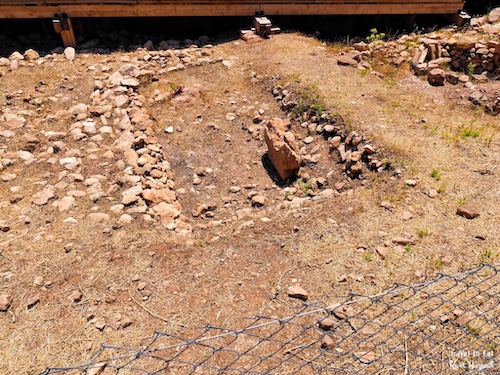
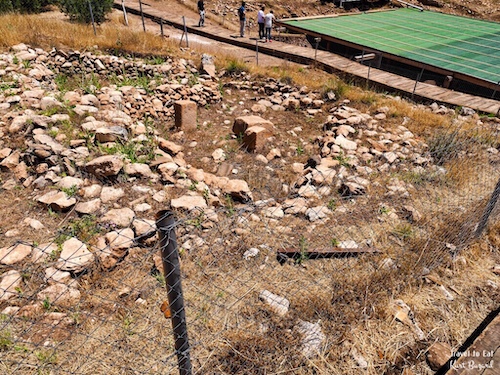
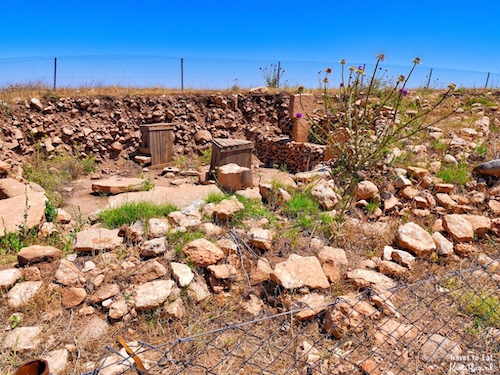
Creation of the circular enclosures in layer III later gave way to the construction of small rectangular rooms in layer II. Rectangular buildings make a more efficient use of space compared with circular structures. They are often associated with the emergence of the Neolithic. But the T-shaped pillars, the main feature of the older enclosures, are also present here, indicating that the buildings of Layer II continued to serve as sanctuaries. Layer II is assigned to Pre-Pottery Neolithic B (PPNB). The several adjoining rectangular, doorless and windowless rooms have floors of polished lime reminiscent of Roman terrazzo floors. Carbon dating has yielded dates between 8800 and 8000 BCE. Several T-pillars up to 1.5 meters tall occupy the center of the rooms.
Burial of the Temples
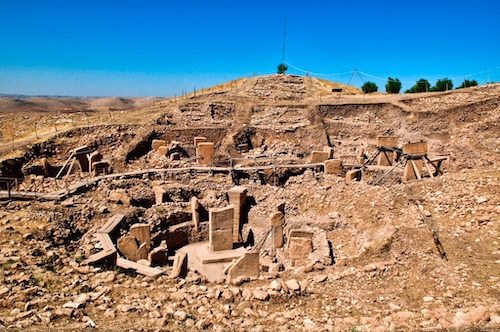
Around the beginning of the 8th millennium BCE Göbekli Tepe (“Potbelly Hill”) lost its importance. The advent of agriculture and animal husbandry brought new realities to human life in the area, and the “Stone-age zoo” (Schmidt’s phrase applied particularly to Layer III, Enclosure D) apparently lost whatever significance it had had for the region’s older, foraging communities. But the complex was not simply abandoned and forgotten to be gradually destroyed by the elements. Instead, each enclosure was deliberately buried under as much as 300 to 500 cubic meters (390 to 650 cu yd) of refuse consisting mainly of small limestone fragments, stone vessels, and stone tools. Many animal, even human, bones have also been identified in the fill. Why the enclosures were buried is unknown, but it preserved them for posterity.
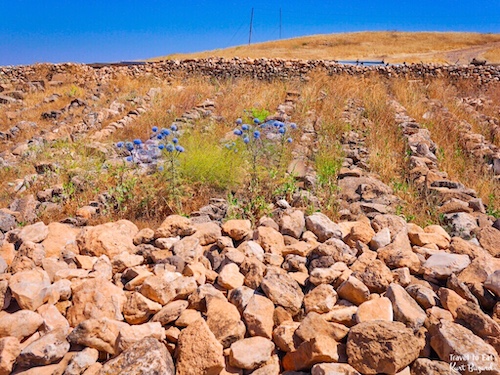
At present Göbekli Tepe raises more questions for archaeology and prehistory than it answers. It remains unknown how a force large enough to construct, augment, and maintain such a substantial complex was mobilized and compensated or fed in the conditions of pre-sedentary society. Scholars cannot interpret the pictograms, and do not know for certain what meaning the animal reliefs had for visitors to the site. It is a fascinating place nonetheless. As always, I hope you enjoyed the post, please leave a comment.
[mappress mapid=”213″]
References:
Gobelitepe: http://gobeklitepe.info/
Göbekli Tepe: http://www.zeropointintime.com/
Tepe Telegrams: https://tepetelegrams.wordpress.com/
National Geographic: http://ngm.nationalgeographic.com/2011/06/gobekli-tepe/mann-text
Smithsonian: http://www.smithsonianmag.com/history/gobekli-tepe-the-worlds-first-temple-83613665/
Iconography at Göbekli Tepe: https://tepetelegrams.wordpress.com/2016/08/16/emblematic-signs-on-the-iconography-of-animals-at-gobekli-tepe/
Neolithic in the Levant: /levant-neolithic-period-metropolitan-museum-of-art-nyc/#more-9287
Ancient Prehistoric Architecture: /a-history-of-ancient-prehistoric-architecture/
Wishing Tree Göbekli Tepe: /wishing-tree-gobekli-tepe-southeastern-anatoliaturkey/
Sent from my iPad

